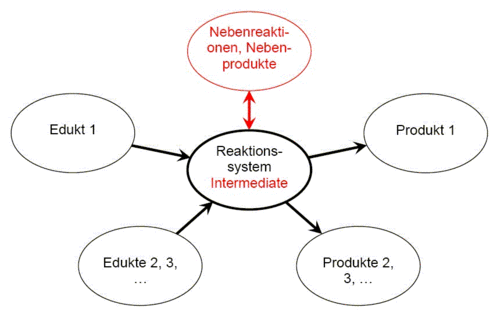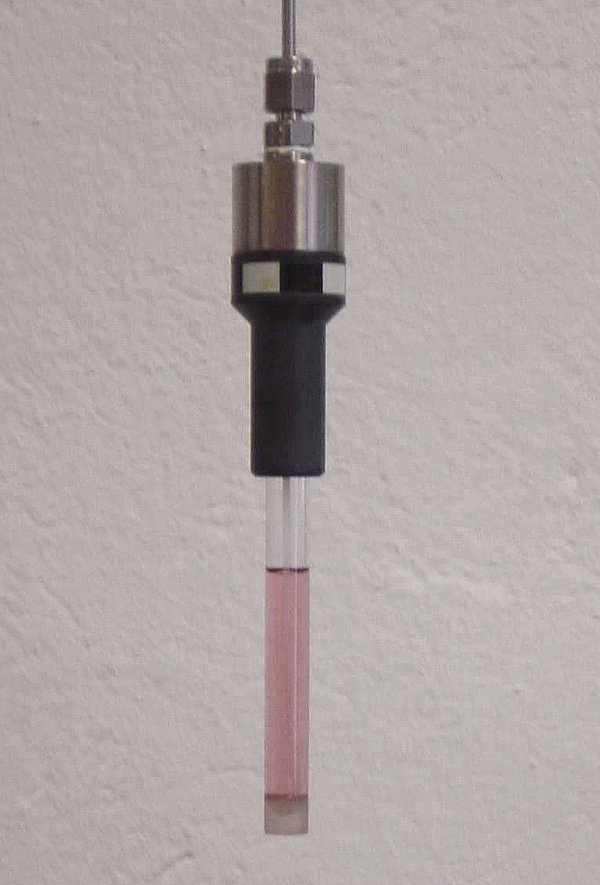In-situ-Spektroskopie
A chemical reaction is best characterized in terms of its components by analytical methods that work without sampling, directly in the reaction system (in situ). These methods are most likely to ensure that the components designated in red, which can be decisive for the success of a chemical process, do not remain undetected.

This is especially true for catalytic processes, where spectroscopy on the working catalyst is particularly challenging, but extremely useful for optimization processes.
In addition to the side and competition reactions mentioned above, the transfer of the catalyst from precursors to the active form and its behavior under reaction conditions (service life, competition and degradation reactions, "catalyst poisoning") play an important role. This can also be explored by in situ experiments. Operando spectroscopy (observation of the working catalyst with simultaneous product analysis) as a special case of in situ spectroscopy can provide valuable contributions here.
In the service area of analytics, we perform in situ investigations on homogeneous reactions using NMR spectroscopy and on heterogeneous systems (solid catalysts) using X-ray diffraction. Other research areas at LIKAT (asymmetric catalysis, vibrational spectroscopy in catalysis, catalytic in situ studies) also make use of in situ methods to understand and improve catalyst systems.

